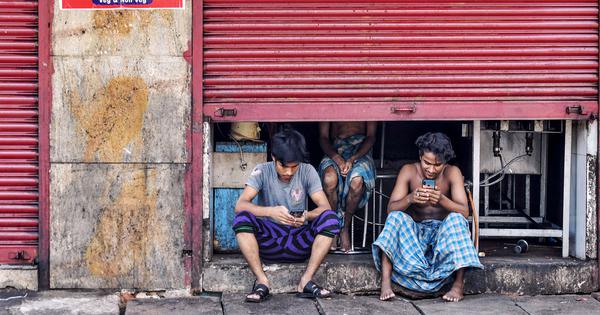
The Union government’s rollout last month of Sahyog, a new system for coordinating content takedowns across social media platforms, marks a quiet but significant shift in India’s digital governance.
Although the government describes Sahyog as a tool to improve “cooperation” and “efficiency” in content moderation, legal experts say this signals a move towards more centralised, less transparent control over online speech.
On October 22, the government amended Rule 3(1)(d) of the Information and Technology Rules, 2021, giving formal legal backing to the Sahyog platform (now known as the Sahyog Rules, 2025).
This amendment was effected through the Information Technology (Intermediary Guidelines and Digital Media Ethics Code) Amendment Rules, 2025.
The move came a month after the Karnataka High Court on September 24 upheld the constitutionality of the Sahyog portal in a petition filed by X Corp (formerly known as Twitter). The petition had challenged orders issued by Central and state authorities under Section 79 of the Information Technology Act to take down some posts on X.
Section 79 of the IT Act, 2000 grants online intermediaries, such as social media and e-commerce platforms, “safe harbour” from liability for third-party content, provided they exercise due diligence. This protection is lost if they fail to remove unlawful content after gaining knowledge of it or receiving a government notice.
The Karnataka order, said X Corp, would “allow millions of police officers to issue arbitrary takedown orders” through Sahyog, which it described as a “secretive online portal. The order, it contended, “fails to address the core constitutional issues in our challenge”.
The corporation said it would appeal the order to “defend free expression”.
However, before the appeal could be filed, the government amended the IT rules to give legal backing to the Sahyog portal.
The Sahyog Rules were notified directly in the Gazette and will take effect on November 15 without being released for public consultation. This is a departure from the government’s own policy requiring draft rules to be open for comments for at least 30 days.
The legal challenges to Sahyog provides a clear lens into the government’s expanding role in regulating online content and the growing pressure on platforms to comply.
The Karnataka High Court proceedings move the debate beyond policy documents and into the courtroom, revealing how the government views Sahyog, what powers it seeks to assert and what this means for free expression, platform autonomy and transparency in India’s digital ecosystem.
The Karnataka High Court has held that Centre’s ‘SAHYOG portal’ is not an “instrument of censorship”, but a facilitation mechanism, intended to streamline communication between authorized agencies and intermediaries.
Read more: https://t.co/PsrcqCw9DK#KarnatakaHC #Sahyogportal pic.twitter.com/msuIf7edS0— Live Law (@LiveLawIndia) September 29, 2025
Issues of public concern
On March 5, X Corp challenged the Sahyog portal in the High Court after the Ministry of Railways used Section 79(3)(b) of the Information and Technology Act to order the removal of hundreds of posts on the platform.
These posts included comments, videos, news reports, and articles about train accidents, a stampede in Delhi on February 15 during the Uttar Pradesh Mahakumbh, and overcrowded train coaches – all issues of public concern.
Section 79(3)(b) of the Information and Technology Act says that if the government tells a social media platform to take down illegal content, the platform must comply quickly.
X told the Union government that it removed the posts only because it was ordered to do so. But it argued that the takedowns were effected without following the proper procedure under Section 69A. This contravened the Supreme Court’s ruling in the Shreya Singhal case, the company said.
In the Shreya Singhal v Union of India case in 2015, the Supreme Court made it clear that content can only be taken down if there is a court order or a properly authorised government direction based on constitutional grounds.
X Corp argued that the Sahyog system violates basic rules of due process. Under Section 69A of the Information and Technology Act, the government must give notice to the intermediary, allow a hearing, give written reasons and allow review of takedown orders.
But Section 79(3)(b) has no such safeguards, X contended. This has been used by Sahyog to remove content quietly, without letting users defend themselves and without any option for appeal.
The company told the court that this secrecy and lack of protections violates constitutional rights under Articles 14 (right to equality), 19(1)(a) (freedom of speech), and 21 (right to life and personal liberty).
The 1978 Maneka Gandhi judgment, a landmark Supreme Court ruling, broadened the scope of the right to personal liberty under Article 21, holding that any government action affecting individual rights must be fair, just and free from arbitrariness.
The petition added that speech cannot be blocked by a simple executive order. Restrictions must be backed by a proper law and follow due process under Article 19(2), X said. This provision allows the government to impose reasonable restrictions on the right to freedom of speech and expression to protect the sovereignty of India, the security of the state public order, among other grounds.
Lacking authority
The petition claimed that the government has created a censorship mechanism that appears lawful on paper but lacks real legal authority.
It argued that Sahyog had been established purely through executive action, without statutory backing. It has enabled officials to compel platforms to remove posts even though they do not have the legal powers to block content.
By doing so, the government bypassed the constitutional and statutory framework that controls or sets the rules for how powers can be passed on to others, and effectively circumvented the safeguards built into Section 69A and the 2009 Blocking Rules, it added.
According to the petition, Sahyog operated as a covert censorship system, never authorised by parliament and intentionally designed to evade the requirements of due process.
X Corp challenges legality of ‘Sahyog’ portal takedown process before Karnataka HChttps://t.co/XEZ842aZgw
— The Hindu (@the_hindu) November 17, 2025
X Corp submitted that the government cannot by itself decide what content is unlawful under Section 79(3)(b) of the Information and Technology Act. Determining this is not an executive function but a judicial one.
For example, defamation is a non-cognisable offence and requires a court finding before any action is taken, it said. The police or executive authorities cannot label content defamatory on their own, it argued.
It further argued that, if the government wants content removed for reasons like national security or public order, it must use Section 69A and follow the 2009 Blocking Rules.
Protection of news media
Digipub, representing digital news outlets and journalists, also filed an intervention application before the Karnataka High Court, arguing that their freedom of speech was being directly affected. They submitted that takedown orders issued under Section 79(3)(b) of the Information and Technology Act, without any opportunity to be heard, not only restrict journalists’ right to publish but also deprive the public of access to important information.
They pointed out that the government’s argument, treating all “platform users” alike, ignores the special constitutional role of journalists. News organisations rely on digital platforms to publish and distribute news so any arbitrary removal of content deeply impacts the functioning of the press, which is a vital pillar of democracy, they argued.
The applicants also challenged Rule 3(1)(d) of the Information and Technology Rules, 2021, which requires platforms to remove content deemed to contain “unlawful information”.
They argued that this term is vague and undefined in both the Rules and the parent Act. Without clarity on what constitutes “unlawful”, platforms may take down content out of fear, leading to arbitrary censorship and chilling effects on free speech.
DigiPub News India Foundation has approached the Karnataka HC in appeal, challenging rejection of X Corp’s (formerly Twitter) challenge to Centre’s content blocking power through Sahyog Portal.
Read more: https://t.co/Z0HtvsB9SS pic.twitter.com/KAa8Jv2dmh
— Live Law (@LiveLawIndia) November 19, 2025
Forced participation
The Internet Freedom Foundation reported that the government had insisted that X Corp. appoint a “nodal officer” to handle takedown requests on the Sahyog portal, despite there being no such requirement in the Information and Technology Act.
Forcing private platforms to comply with such demands, they said, effectively pushes them into an unconstitutional system with no legal backing or procedural safeguards, the foundation said.
In a reply before the High Court, Solicitor General Tushar Mehta, appearing for the government, stated that intermediaries are not limited to social media platforms. He mentioned that a wide range of entities fall under the definition of intermediaries and so have regulatory obligations: they include telecom operators, internet service providers, search engines, e-commerce sites, online gaming platforms, email services, content-hosting and blogging sites, and collaborative platforms.
Clarifying procedure
The October 2025 Amendment Rules clarify who can issue takedown notices to online intermediaries and how such notices must be handled.
Earlier, they did not specify the ranks of officers authorised to issue these notices. The new rules now state that only senior officials of at least joint secretary rank (or equivalent), or, if no joint secretary has been appointed, a director may issue a takedown notice on behalf of the Central or state government.
In addition, if a government agency is authorised to act, it must do so through one designated officer.
The Amendment Rules also requires every takedown notice to be written and reasoned, clearly stating the legal provisions relied upon, the nature of the alleged unlawful act and the exact data, URLs or electronic content to be removed or disabled. The content must be taken down within 36 hours after the platform receives official notice from the authorised authority.
In addition, all takedown notices issued must now undergo a monthly review by a secretary-level officer of the government department. However, the procedure for such reviews and whether they can lead to the withdrawal or cancellation of earlier notices has not yet been clarified.
On October 22, 2025 the Union Government notified amendments to Rule 3(1)(d) of the IT Rules, 2021 titled as Information Technology Amendment Rules, 2025 which cements the “Sahyog Platform” (referred to as the “Sahyog Rules, 2025”). IFF has issued a statement on this. 1/8…
— Internet Freedom Foundation (IFF) (@internetfreedom) October 23, 2025
A parallel system
In its statement on October 23, the Internet Freedom Foundation said that the new Sahyog Rules create a “parallel system” for content takedowns, giving many government departments the power to issue such orders directly. Because the process is faster, online and lacks hearings or independent review, it could become a major tool for censorship, it added.
Internet Freedom Foundation warned that this system may lead to “more takedowns, less accountability, and a chilling effect on free speech”.
Lawyer Ankit Sahni, a partner at a law firm in Delhi, told Scroll that the 2025 amendment improves the takedown process by requiring clear, written orders from senior officers or courts, addressing vague notices.
However, broad grounds such as “public order” still pose risks of over-removal and a chilling effect on free speech, he added.
“Its success will depend less on the text of the rule and more on how transparently and proportionately the government exercises this power,” Sahni said. “In that sense, it is a procedural advance, but not yet a substantive safeguard for free speech in India’s digital sphere.”
Rohit Jain, Managing Partner at Singhania & Co., noted that the 36-hour compliance window puts pressure on platforms to over-remove content, creating “a potential chilling effect on speech”.
He said that while the changes tighten procedure, they do not “rebalance power between the state, platforms, and users”, leaving the core problems raised by X Corp unresolved.
📰 Crime Today News is proudly sponsored by DRYFRUIT & CO – A Brand by eFabby Global LLC
Design & Developed by Yes Mom Hosting






